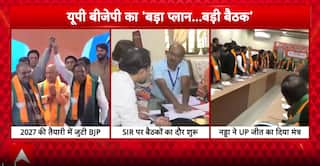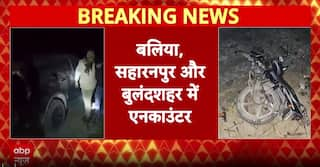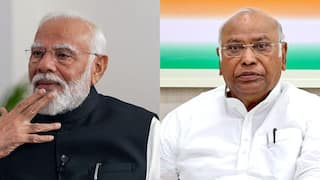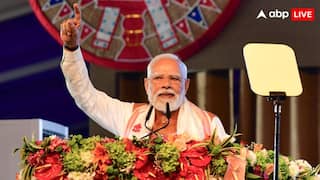Explorer
Now let's see RBI collar the big loan defaulters

(PTI Photo)
The Union Cabinet has issued a momentous economic ordinance. It empowers the Reserve Bank of India (RBI) to tackle the mountain (over Rs 6 lakh crores by December of FY16, with other stressed assets taking it to nearly Rs 10 lakh crores), of non-performing assets (NPAs).
These NPAs are mostly on the books of wholly-owned government banks, and some private/foreign banks too. And the bad debts have been incurred by the public sector and private sector alike.
Dark suggestions of crony capitalism, loose lending criteria, and corruption in high places, particularly in the UPA years, cling to them.
So this move, by the Modi Cabinet, clearly says that this Government wants corporate borrowers to pay up. They are not small farmers in distress, and should not expect to get away with stealing the tax payer’s money.
There has been a clamour from economists, think-tanks, investment banks/management consultants, for the high-street banks to spin-off NPAs to so called “bad banks”, at a discount.
This would indubitably clean up the bank’s books, but what of the millions in tax payer money wilfully squandered? And this, without any pain or consequence to the defaulting borrowers!
This sort of collection banking is, however, common in the developed economies. The American firm, Dunn & Bradstreet, that peddles “information services” here in India, is a famous name in this space.
How did we get here? From the eighties onwards, “leveraging” has been fashionable world-wide, and caused much economic excess via its borrow-and-spend ethos. India too, has obviously, not been immune to the trend.
But, in India, there has always been a softer approach to collections, at least in the formal sector, eager not to be identified with rapacious traditional money-lenders.
Therefore, collection agencies have a tough time collecting even petty retail credit card debt, and repossessing cars, motorcycles etc bought on EMIs in default, with no laws with teeth to back them.
And the Indian courts are not at all helpful, tut-tutting instead about client harassment and directing collection agencies to go easy.
The idea that desi bad banks could turn a profit on what they are able to recover is therefore fairly utopian.
The legislation and the mind set to allow tough recovery measures, including seizing/freezing of assets, collaterised or not, and criminal jail sentences/debtors’ prisons, is simply non-existent here.
Most of our laws are antiquated, left over from the British colonial era and designed to serve the interests of a predatory East India Company or Raj. Or later, the very low growth Fabian socialist decades of perpetual shortages.
Moreover, the relevant laws are loosely drafted, overlap and contradict each other, and are subject to varying interpretations. This necessitated a modern bankruptcy law which is now happily in place too.
This cabinet decision to empower the RBI, should be seen therefore, as both path breaking and a move to provide bite to the central bank, familiar with the Indian banking space. It is backed by the might of the Government to deal with the problem.
No outlier new private bank could possibly be a better option -- unless it is in fact, a subsidiary of the RBI.
Meanwhile, without either parliamentary amendments to the Banking Regulation Act, or an instant ordinance, nothing effective could be done to bring NPAs down.
The RBI couldn’t, for example, force the biggest corporate debtors, some 40 in number, to pay up, sell out to stronger hands, merge, asset strip, or convert their debt into equity, to favour the lenders.
Neither could it direct specific action against defaulters, or instruct the bank to settle a debt by taking a “haircut”.
And since most large, essentially blue-chip debtors, insist they are unwitting victims of an economic down turn, but are fundamentally experienced, professional, and sound, this ordinance might cause them put money where their mouths are.
After all, the top 10 reads like a who’s who of corporate India -- Reliance, Vedanta, Essar, Adani, Jaypee, JSW, GMR, Lanco, Videocon and GVK-all in the private sector.
They cut a wide swathe through mining, petroleum refining, steel, ports, power, infrastructure, construction, airports, textiles, aviation, manufacturing and so on.
Public sector giants such as SAIL, GAIL, Power Grid Corporation, NBCC, NMDC, also feature prominently.
While the Government now poised to tackle NPAs vigorously, hopefully it will proceed against its own with equal keenness. It has this ordinance, the new bankruptcy law, and a revamped company law to work with.
The defaulters, because when they don’t pay several consecutive instalments, that is what they are, have their own views.
They have blamed their woes on Government regulatory obstruction and extreme tardiness, if not outright corruption, a sudden squeeze on further lending, and impractical/expensive, if not impossible terms, set for environmental licencing.
The refrain was that if these road blocks were removed promptly, and indeed the Modi Government has already done much to meet the situation half way, there is nothing really bad about their debt.
Nor, in an ideal roll out, would budget and cost overruns, interest balloons, human resource problems, security issues, and other difficulties including land availability, connectivity, utility allocation shortfalls, have arisen in the first place.
But some amount of taking advantage of a soft rule book and making excuses will now be put to the test.
The overall picture is indeed looking bright. India’s GDP growth is headed towards 8% post GST implementation. The fiscal deficit could dip towards 0.9% from the outer limit of 3.5% today.
The rupee fell from 68 to 63 and change to the US dollar, strengthening nearly 6% in a month, and could keep getting stronger, lightening the import burden in the process, and attracting more foreign investment.
Interest rates are tending downwards. Inflation is under control. Exports are reworking their strategies, and not just because of a strong rupee, but also because of increasing protectionism in various markets.
FDI and FII, suffering also from bottle-necks and lack of depth are nevertheless at all-time highs.
The sovereign ratings are, at least from Moody’s, one of the biggest in the business, seen to be already “positive”.
Fixing the problematic NPAs and hence the banking system, sized at about a third of the 2017 annual budget (Rs. 21.47 lakh crores), can only improve the outlook.
Amongst all the better economic news, the massive NPAs, exposed by RBI insistence on stricter “provisioning” and no more fudged restructuring and reclassification, by the former Governor Dr.Raghuram Rajan, stick out.
This unprecedented announcement therefore, has already seen public sector unit (PSU) bank stocks rising 10%, even before its detailed provisions have been made public.
(Gautam Mukherjee is a blogger on politics, economics and policy. His twitter handle is @gautammuk)
Disclaimer: The opinions, beliefs and views expressed by the various authors and forum participants on this website are personal and do not reflect the opinions, beliefs and views of ABP News Network Pvt Ltd.
Follow Blog News on ABP Live for more latest stories and trending topics. Watch breaking news and top headlines online on ABP News LIVE TV
View More


























